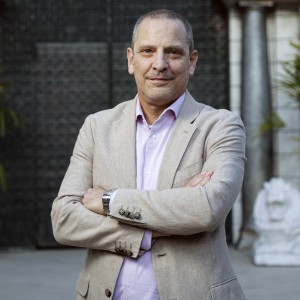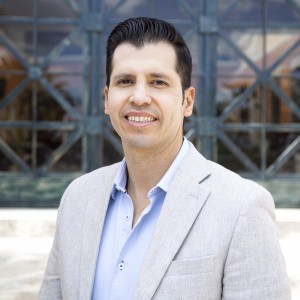Computational and Theoretical Chemistry Group
The Computational and Theoretical Chemistry Group - QCT carries out research projects dedicated to the theoretical study of the properties of molecular, crystalline, biomolecular, and nanosystem systems at different levels of theory.
Research
The USFQ Computational and Theoretical Chemistry group develops research projects within the fields of nanotechnology, materials science, biomolecules, and environmental chemistry, seeking to contribute to the understanding and/or explanation of experimental results obtained on systems of current scientific interest. Some of the research projects are developed in collaboration with National and International Experimental and Theoretical Research Groups.
The main research topics of the QCT are:
Perfluorooctane Sulfonate (PFOS) reactivity
PFOS and its derivatives are surfactants that have very important physical-chemical properties, which is why they have been widely used in various industries such as food, textiles, paper, and paint (in addition to others); but above these, its most important application has been found in the semiconductor industry since this compound is essential in the photolithography process that allows the production of microchips present in high-tech equipment such as computers and cell phones ... + Read more
Structural and Electronic Properties of Pirogalol [4] Arenas
Pyrogallol [4] arenes are macrocyclic oligomers that are obtained by condensation of 1,2,3-benzotriazole (i.e., pyrogallol) with aldehydes. Since the first reports of their synthesis in the 1950s have these compounds been extensively studied due to their potential applications as molecular filters, drug transporters, gas-phase molecule storage, etc ...? + Read more
Theoretical Study of the Applications of Crystals of Nanoclusters of B12N12
The compounds formed by boron and nitrogen (ie, BiNi) have the property of being isoelectronic to carbon compounds, so theoretically, they can take polymorphic forms homologous to graphite sheets, or to the three-dimensional structures of fullerenes and nanotubes that they believed they were allotropes exclusive to systems consisting solely of carbon ... + Read more
Study of the self-assembly mechanisms of supramolecular structures: for example, the self-assembly mechanisms of G-quadruple DNA.
The manufacture of nanostructures using DNA as a material to build systems capable of performing complex functions is a frontier in continuous exploration. In this project, we seek detailed characterization at the atomic level of G-quadruple units to gain a better understanding of how these units can self-assemble into interlocked G-quadruplex G-type oligomers ... + Read more
Simulations with molecular dynamics (properties and structure) of unconventional DNA.
The objective of this project is to characterize systems in which there is evidence of unconventional DNA structures in vitro, whether or not conclusive evidence of their existence exists in biological systems, but whose study gives us ways to explore new mechanisms of genetic regulation and the dynamics of nucleic acids. For example, we study closure type structures, sequences that form such structures have been found in the origins of virus and bacteria replication...?
Resources
The Computational and Theoretical Chemistry Research Group (QCT) is part of the Department of Chemistry and Chemical Engineering of the San Francisco de Quito University (USFQ). Under the direction of Professors Cesar H. Zambrano, F. Javier Torres and Miguel Ángel Méndez at QCT-USFQ, research projects are carried out dedicated to the study of the properties of molecular, crystalline, biomolecular and nanosystem systems at different levels of theory using ab initio, semi-empirical, and molecular dynamics simulation methods performed on high-performance computers
The computer programs that are mainly used in the QCT-USFQ are:
Crystal

It is a program developed and maintained by the Grupo di Chimica Teorica dell' Università degli Studi di Torino that allows ab initio calculations of periodic systems using localized Gaussian-type base functions and functional Hartree-Fock / DFT hybrids.
Website: http://www.crystal.unito.it
Gaussian

It is a commercial program for use in Theoretical Chemistry that allows describing molecules (and crystals in their latest Gaussian09 version) at different levels of theory: semi-empirical, Hartree-Fock, DFT, post-Hartree-Fock, Interaction of Configurations, among others.
Website: http://www.gaussian.org
NAMD Scalable Molecular Dynamics

It is a program designed for high-performance simulation of very large biomolecular systems. Simulation preparation and analysis are integrated into the VMD visualization package. Unlike most molecular dynamics programs, NAMD runs on a wide variety of platforms.
Website: http://www.ks.uiuc.edu/Research/namd/
Experimental and Theoretical Research Groups
Ecuadorian Group for the Theoretical and Experimental Study of Nanosystems -GETNano-

The Ecuadorian Group for the Experimental and Theoretical Study of Nanosystems –GETNano– is a national initiative that brings together researchers from various universities in the country (USFQ, UTPL, EPN, ESPOCH, UNACH, and ESPOL), who collaborate in research projects focused on the Description of materials and molecular systems on a nanoscopic scale using experimental techniques and theoretical methods of computational simulation. In addition to contributing to the development of nanotechnology in Ecuador, GETNano's main objective is to educate and train young researchers. To fulfill this objective, students from the member universities of GETNano have been involved in all stages of the research projects carried out within the group and high-level workshops and schools have been organized in various cities in the country such as Loja, Riobamba, and Quito.
Università degli Studi Torino (UNITO)

The QCT has received from the Grupo di Chimica Teorica dell'Università degli Studi di Torino several versions of the CRYSTAL program in the form of a donation. The QCT is currently the official evaluator of the new versions of CRYSTAL
Loja Private Technical University (UTPL)

The QCT-USFQ collaborates with the Chemical Engineering area of the UTPL as part of the alliance involving GETNano.
National Polytechnic School (EPN)

The QCT-USFQ collaborates with the Physics area of the EPN as part of the alliance involving GETNano
Litoral Polytechnic School (ESPOL)

The QCT-USFQ collaborates with ESPOL's Center for Applied Nanotechnology Research and Development as part of the alliance involving GETNano.
Higher Polytechnic School of Chimborazo (ESPOCH)

The QCT-USFQ collaborates with the ESPOCH School of Physics and Mathematics as part of the alliance involving GETNano.
National University of Chimborazo (UNACH)

The QCT-USFQ collaborates with the UNACH Faculty of Engineering as part of the alliance involving GETNano.




![Propiedades Estructurales y Electronicas de los Pirogalol[4]Arenos](http://www.usfq.edu.ec/programas_academicos/colegios/politecnico/institutos/qct/investigacion/PublishingImages/pequeno/i_pirogalo_pq.jpg)


